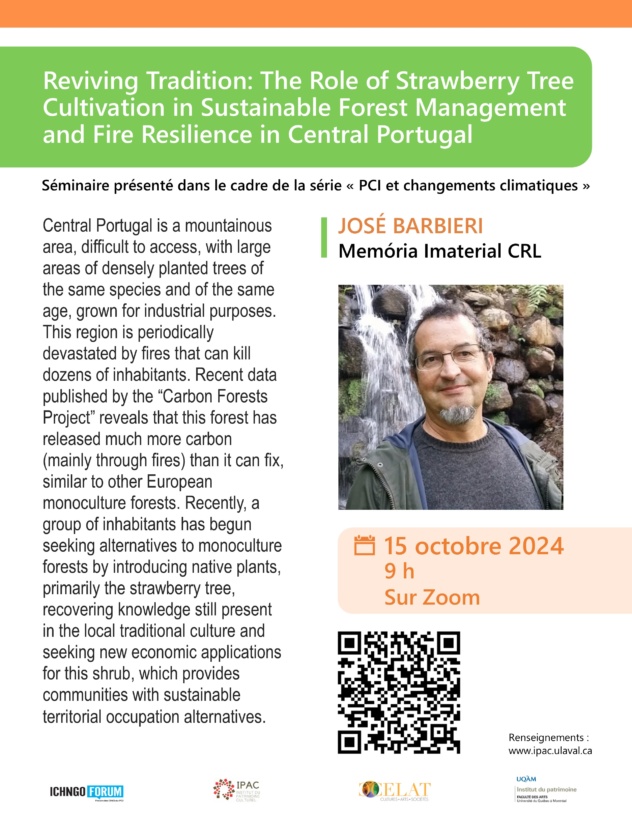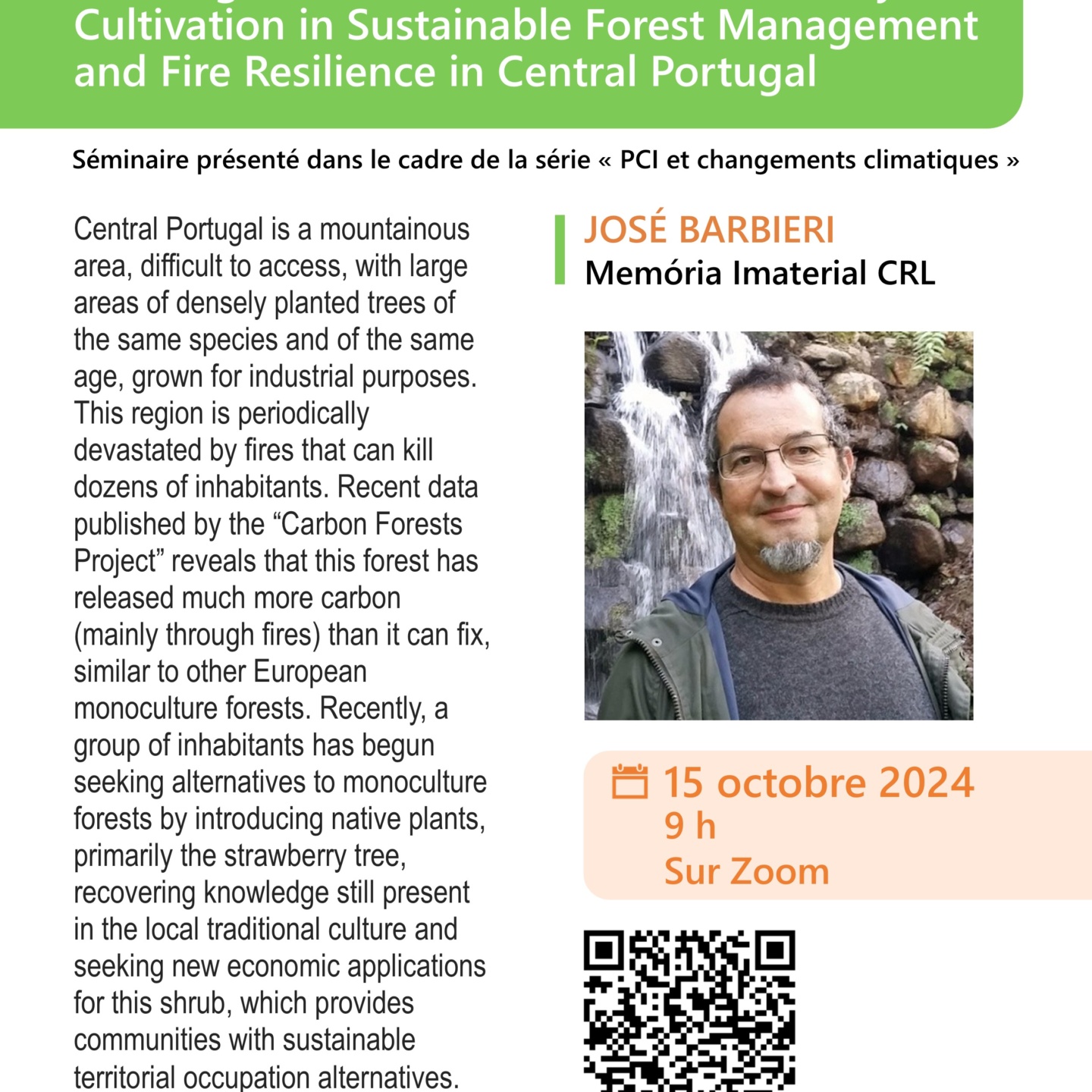Dans le cadre des activités du Groupe de travail sur le PCI, le changement climatique et l’environnement et de la série « PCI et changements climatiques », l’Institut du patrimoine culturel, le Centre de recherche Cultures – Arts – Sociétés et l’Institut du patrimoine de l’UQAM vous invitent à assister au séminaire en ligne « Reviving Tradition: The Role of Strawberry Tree Cultivation in Sustainable Forest Management and Fire Resilience in Central Portugal » qui sera présenté en anglais par José Barbieri (Memória Imaterial CRL) le mardi 15 octobre à 9 h (heure du Québec). Bienvenue à tous et à toutes!
Lien de la réunion : https://us02web.zoom.us/j/82841876119?pwd=OVVDVjNVTWtzSlZicW4zR0dwbGVZdz09
ID of Meeting : 828 4187 6119
Secret Code : 812631

Résumé de la présentation
« Central Portugal is a mountainous area, difficult to access, with large areas of densely planted trees of the same species and of the same age, grown for industrial purposes. This region is periodically devastated by fires that can kill dozens of inhabitants in a single fire. Recent data published by the “Carbon Forests Project” reveals that this forest has released much more carbon (mainly through fires) than it can fix, similar to other European monoculture forests. Recently, a group of inhabitants has begun seeking alternatives to monoculture forests by introducing native plants, primarily the strawberry tree, recovering knowledge still present in the local traditional culture and seeking new economic applications for this shrub, which provides communities with sustainable territorial occupation alternatives. The strawberry tree is a native shrub with great climate resilience, naturally grown on mountain slopes and resisting and blocking forest fires. The fruit of this shrub, the strawberry tree fruit (medronho), is harvested by the region’s inhabitants, one of the few examples of a traditional food gathering activity in Portugal. It is traditionally used to make a distilled alcoholic beverage highly appreciated by local communities. Its local production, with distillation devices passed down through generations and often used communally, is a pretext for gatherings of friends and families in the villages. Until now, this shrub had never been deliberately reproduced and planted for agricultural purposes. For the first time, the new generations of these communities are using this shrub as an alternative to eucalyptus and pine monocultures, creating fire-resistant areas (or areas that recover quickly in case of forest fire). They are also developing new economic products based on the sustainable exploitation of the strawberry fruit tree. These populations also have an awareness of the numerous uses of the strawberry tree in traditional medicine and are conscious of the increased biodiversity in areas where this shrub grows. »
Présentation du conférencier
José Barbieri is since 2008 director of Memória Imaterial CRL (entity accredited as an NGO consultant to the Intergovernmental Committee for the Safeguarding of UNESCO’s Intangible Cultural Heritage No. 90307), managing the artistic program LU.GAR (cultural territories), the ICH research and dissemination project – MEMORIAMEDIA.NET (e-museum), and the assistance sector for research projects in Literature, Arts and Heritage designing and implementing collaborative databases and websites for research groups, highlighting the flagship project of the EU and ICOM, EULACMUSEUMS.NET (community museums in Europe, Latin America and the Caribbean) and the projects of IELT-FCSH-NOVA (New University of Lisbon): MODERNISMO.PT (literary texts , artworks and key documents of Modernism written in Portuguese) and RELITROM.PT (on the creative application of ancient novels – 15th-18th centuries). Barbieri is also a director of video documentaries on ICH, memory and traditional culture (1993–present) and has been the creator, artistic director, and producer of multidisciplinary performances since 1993. Between 1985 and 1989, he worked as a scenography director for opera at the Teatro Nacional de São Carlos and for dance at the Companhia Nacional de Bailado. He holds a degree in theater and cinema from ESTC/Lisbon, where he studied from 1981 to 1985.


